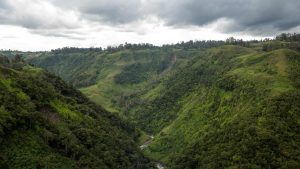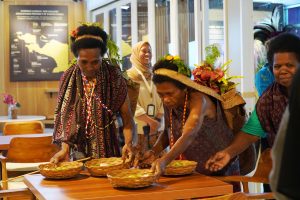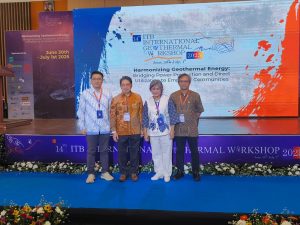by: Farid Gaban*
The Prabowo administration is determined to develop large-scale food estates, an agricultural model that has failed since the days of Soeharto, Susilo Bambang Yudhoyono and Jokowi.
The government plans to clear 20 million hectares of forest to fulfil this ambition. This is horrifying. The government is sowing the wind to reap the storm later on.
Food estate is a form of obsession with gigantism, thinking that large-scale production must be efficient and, therefore, cool. This is misguided.
The food estate idea rests on the principle of “economies of scale”, that only with large scale will food production be efficient.
However, anyone who has studied economics will know that efficiency can also be achieved through small-scale integrated farming (“economies of scope”).
Even though the land area is small, integrated farming is efficient because people can get free fertiliser, for example, from their goat pens. Through cooperative model cooperation, small farmers can also get seeds and other means of production more cheaply.
According to Vandana Shiva, an Indian food sovereignty activist, 80% of the world’s food is supplied by family farming, which uses only 25% of the world’s total agricultural land.
Large industrial farms, on the other hand, use 75% of the land to produce only 20% of the food.
The Food and Agriculture Organization (FAO) data is similar, showing how small farms are more efficient than large-scale farms.
According to the FAO, small-scale farms contribute 35% of global food production, using only 12% of the world’s agricultural land.
The FAO recommends that countries strengthen small-scale family farming to achieve self-sufficiency and food security. Governments are advised to help small farmers improve their productivity and welfare.
Only if farmers are more prosperous can self-sufficiency and food security be sustainable.
Not only is large-scale agriculture not necessarily efficient, but its environmental impact can be very serious, especially if you have to clear forests.
The larger the scale of agriculture, the greater the impact on the environment, so much so that it is often irreversible.
Yet forests are the foundation of life. Its biodiversity inspires a diversity of art, culture and even science.
Just look at our diverse culinary arts. Our architecture, household utensils, clothing, music and dance, and social customs are all inspired by nature.
Destroying forests is destroying cultural diversity. Pancasila is just a platitude.
Forests are not just wood that can be cut down and sold. They contain a variety of flora and fauna: algae, lichens and fungi. They have long inspired science, engineering and design.
See how stingrays and shrimp beaks, for example, inspired the design of aeroplanes and bullet trains.
Biodiversity provides the basic materials and inspires pharmaceutical science, medicine, biochemistry and microbiology. Forests are a storehouse of knowledge.
By studying the biodiversity of forests, we can produce knowledge. Knowledge is the most expensive “commodity”; it is more expensive than the wood we can cut, the food we can harvest and the oil we can tap.
*Writer is a journalist, Ekspedisi Indonesia Baru
The article expresses the author’s personal opinion and does not reflect the official stance of tanahair.net.














